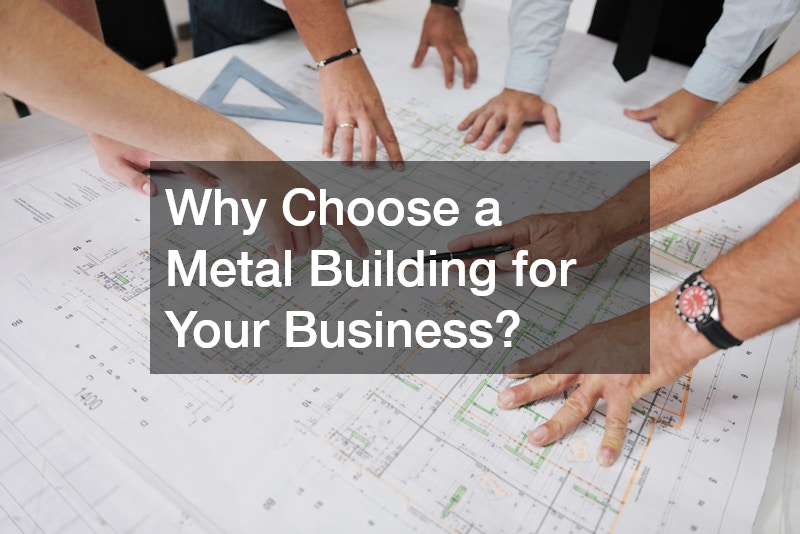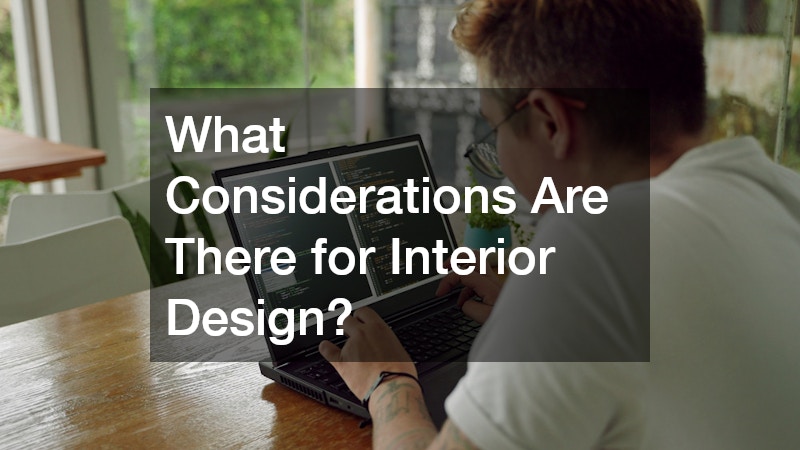Constructing a metal commercial building is an increasingly popular choice for businesses of all sizes. Metal buildings provide a combination of durability, cost-effectiveness, and flexibility that is difficult to match with traditional construction methods. Whether you are planning a warehouse, office space, retail facility, or a specialized manufacturing center, a commercial metal building can be tailored to meet both operational and aesthetic requirements. While there are many advantages, careful planning is essential to ensure that the structure fulfills your long-term needs. From layout and insulation to roofing, security, and energy efficiency, every aspect of a metal building can be optimized for your specific business goals.
Why Choose a Metal Building for Your Business?

Cost-Efficiency of Metal Buildings
One of the most significant benefits of metal buildings is their cost efficiency. Prefabricated components reduce both material and labor costs, and build to suit options ensure that businesses only pay for the space and features they need. By working with commercial general contracting teams, companies can streamline the procurement process, accurately budget for construction, and minimize unforeseen expenses. Metal buildings often require less maintenance over time, further reducing overall operational costs compared to traditional structures built with wood or brick.
Durability and Longevity
Metal buildings are engineered to withstand harsh environmental conditions, including heavy snow, high winds, and extreme heat. Steel frameworks resist warping, rot, and termite damage, offering decades of reliable performance. Commercial spray foam roofing enhances durability while providing insulation and protection against water intrusion. Regular roof washing and inspections can further extend the building’s lifespan, preventing common issues like corrosion, mold, or leaks. The longevity of a metal structure ensures fewer interruptions, allowing your business to operate without costly downtime.
Environmental Impact
Sustainability is a growing priority for modern businesses. Metal buildings are highly recyclable, and many use recycled steel or aluminum in their construction. These buildings are energy-efficient when combined with commercial HVAC service, spray foam insulation, and energy-conscious lighting solutions. Choosing a metal structure can help a business qualify for green building certifications, demonstrating a commitment to environmental stewardship. Sustainability also appeals to customers and clients who prioritize eco-friendly practices, providing an additional branding advantage.
Flexibility in Design
Metal commercial buildings offer unmatched flexibility in both layout and function. Open floor plans can be modified with partitions, mezzanines, or metal fabrications to accommodate different operations. Security camera systems can be integrated seamlessly throughout the building, providing enhanced monitoring and safety. Build-to-suit options allow companies to customize dimensions, floor plans, and interior spaces to match their operational needs. This adaptability ensures that the building remains functional and relevant as business demands evolve.
Speed of Construction
Construction timelines are often shorter for metal buildings compared to traditional construction methods. Prefabricated steel components and panels can be assembled quickly, reducing labor costs and exposure to weather delays. Commercial general contracting teams can coordinate multiple phases simultaneously, from site preparation and excavation to roofing and interior finishes. Faster construction means businesses can occupy the building sooner, accelerating the return on investment and supporting rapid business growth.
How to Plan the Building Layout for Efficiency?
Assessing Business Needs
A well-planned layout is essential for operational efficiency. Businesses should consider workflow patterns, employee requirements, storage needs, and customer accessibility when designing the building. Consulting with commercial general contracting professionals ensures that the layout accommodates all operational requirements, including spaces for metal fabrications, machinery, and office areas. Proper planning prevents wasted space and supports smooth day-to-day operations.
Space Optimization Techniques
Optimizing space in a metal building requires thoughtful design. Open floor plans provide flexibility, while partitions and mezzanines create dedicated areas for specific activities. Vertical storage solutions maximize capacity without expanding the building footprint. Specialized metal fabrications, such as shelving, racks, or customized workstations, further enhance efficiency. By optimizing every square foot, businesses can reduce congestion, improve workflow, and create a more productive environment.
Incorporating Future Expansion Plans
Planning for future growth is easier with metal buildings than with traditional construction. Build-to-suit designs and modular structures allow additional bays or extensions to be added as business needs expand. This approach avoids costly structural modifications in the future and ensures the building can accommodate increased operations, new technologies, or additional staff. Long-term planning ensures that your investment remains viable for decades.
Accessibility Considerations
Accessibility is critical for both employees and customers. Entrances, hallways, and common areas should comply with ADA standards and other local regulations. Properly designed ramps, elevators, and door placements improve mobility throughout the building. Accessibility planning not only ensures regulatory compliance but also creates a welcoming environment for all occupants, improving employee satisfaction and customer experience.
Balancing Open and Private Spaces
Balancing open collaborative areas with private offices and meeting rooms is essential. Open spaces encourage teamwork and flexibility, while private areas allow focused work and confidential discussions. Security camera systems can be strategically installed to monitor both open and private spaces, maintaining safety without compromising privacy. A thoughtful balance enhances productivity and ensures operational efficiency.
What Are the Different Styles and Designs Available?

Traditional Metal Building Styles
Traditional metal buildings are straightforward in design, typically featuring rectangular layouts, pitched roofs, and durable steel frames. These structures are ideal for warehouses, manufacturing facilities, and storage operations. A commercial roofer can ensure that roofing is installed correctly for long-term performance, while commercial spray foam roofing provides additional insulation and water protection. Traditional designs remain cost-effective, practical, and reliable.
Modern Architectural Trends
Modern metal buildings offer contemporary aesthetics, including flat or slightly pitched roofs, large windows, and clean exterior finishes. They often integrate commercial HVAC service systems for energy efficiency and comfort. Security camera systems can be seamlessly incorporated to protect personnel and assets. Modern designs allow businesses to make a strong visual impression while maintaining functionality, supporting both operational needs and branding objectives.
Customizable Features
Metal buildings can be highly customized. Build-to-suit options allow businesses to specify floor plans, dimensions, and structural components. Metal fabrications can be used to create partitions, shelving, mezzanines, or specialized work areas. Commercial general contracting teams coordinate these customizations to ensure the building meets operational requirements. Customizable features maximize both efficiency and usability.
Color and Finish Options
Metal buildings can be finished in a wide range of colors and protective coatings. Exterior finishes protect against corrosion and environmental wear while reflecting your brand identity. Roof washing and maintenance programs help preserve the aesthetic appearance over time. Color and finish choices enhance curb appeal while ensuring durability and long-term performance.
Integrating Brand Identity in Design
Metal commercial buildings provide an opportunity to showcase your brand. Architectural details, exterior signage, and color schemes can reinforce your business identity. Build-to-suit design, modern finishes, and energy-efficient systems all contribute to a building that aligns with your company’s values and operational goals, creating a lasting impression for employees, customers, and clients.
How to Insulate and Make the Building Energy Efficient?
Types of Insulation for Metal Buildings
Effective insulation improves comfort and reduces energy costs. Commercial spray foam roofing is ideal for sealing gaps, insulating the roof, and providing moisture protection. Wall panels and insulating blankets can further enhance efficiency. Combining these approaches creates a temperature-controlled environment suitable for both employees and sensitive equipment.
Temperature Control Solutions
Maintaining consistent temperatures is critical in a metal building. Commercial HVAC service systems provide precise heating, cooling, and ventilation solutions. Zoned systems allow different areas of the building to operate at optimal temperatures, improving energy efficiency and comfort. Integrating HVAC systems into the building design ensures performance and longevity.
Energy-efficient Windows and Doors
Energy-efficient doors and windows reduce heat loss and improve comfort. Double- or triple-glazed windows, insulated doors, and reflective coatings help maintain a consistent interior temperature. These features can be incorporated in build-to-suit designs to optimize energy efficiency while maintaining security and accessibility.
Renewable Energy Options
Metal buildings are well-suited for renewable energy solutions such as solar panels. Rooftop solar installations can supply electricity for lighting, HVAC systems, and office equipment. Combining renewable energy with commercial spray foam roofing and energy-efficient HVAC systems can substantially reduce operating costs and support sustainability goals.
Energy Audits and Certifications
Regular energy audits identify inefficiencies and opportunities for improvement. Achieving certifications such as LEED or ENERGY STAR demonstrates a commitment to sustainable practices. Commercial general contracting teams can assist in implementing upgrades and ensuring compliance with energy standards, enhancing the building’s long-term value.
What Are the Maintenance Requirements?
Routine Inspection Techniques
Regular inspections preserve the integrity of metal buildings. Roof washing prevents mold, dirt accumulation, and corrosion. Security camera systems should be checked to ensure full operational functionality. Inspections of walls, doors, windows, and HVAC systems can prevent small issues from becoming costly repairs.
Preventive Maintenance Measures
Preventive maintenance is critical for extending a building’s lifespan. Regular cleaning, inspections, and application of protective coatings prevent deterioration. Commercial spray foam roofing may require occasional touch-ups, while HVAC systems benefit from scheduled servicing to maintain efficiency.
Common Repair Needs
Common repairs include panel replacement, sealing gaps, or roof maintenance. A qualified commercial roofer ensures repairs are completed to industry standards. Metal fabrications such as shelving, mezzanines, or partitions should also be maintained for stability and safety.
Weather-related Considerations
Metal buildings must be designed to withstand local weather conditions. Snow load, wind, and rain can impact structural integrity if not properly planned for. Security camera systems provide monitoring during severe weather, and roof washing helps prevent water buildup that could compromise the building.
Protective Coatings and Treatments
Protective coatings on metal surfaces prevent rust, corrosion, and UV damage. Anti-corrosion treatments, paint coatings, and roof washing maintenance programs ensure the building remains functional and visually appealing for years. These treatments reduce long-term maintenance costs and support building longevity.
How to Meet Building Codes and Regulations?

Understanding Local Zoning Laws
Compliance with local zoning laws is essential for construction approval. Metal buildings must adhere to specific requirements regarding height, setbacks, and land use. Commercial general contracting teams can navigate zoning laws to prevent delays and ensure legal compliance.
Working with Regulatory Agencies
Collaboration with regulatory agencies ensures that all permits are properly obtained. Permitting processes include structural inspections, fire safety compliance, and energy efficiency verification. Experienced contractors streamline these interactions, preventing administrative setbacks.
Building Code Compliance
Metal buildings must meet all relevant building codes, including structural integrity, fire resistance, and safety standards. Commercial spray foam roofing, proper HVAC installation, and durable metal fabrications all contribute to code compliance. Working with a commercial roofer and general contractor ensures these standards are met.
Environmental and Safety Standards
Environmental regulations may include stormwater management, insulation standards, and energy efficiency requirements. Safety standards cover fire protection, emergency exits, and security. Integrating security camera systems and fire safety protocols helps maintain a safe and compliant environment.
Legal and Insurance Considerations
Metal buildings require proper insurance coverage, including liability, property, and workers’ compensation. Commercial general contracting teams can provide guidance to ensure compliance with local insurance requirements and protect your investment from potential risks.
What Are the Cost Considerations and Budgeting Tips?
Estimating Material Costs
Material costs for metal buildings include steel framing, panels, insulation, roofing, and finishes. Commercial spray foam roofing and energy-efficient windows add to the upfront cost but offer long-term savings. Build-to-suit designs allow you to optimize the materials based on operational needs.
Labor and Construction Fees
Labor costs vary based on complexity, location, and contractor expertise. Prefabricated metal buildings reduce labor needs, but commercial general contracting services are essential to coordinate installation, roof washing, and HVAC integration efficiently.
Factors Influencing Final Costs
Final costs are influenced by building size, customization, roofing type, HVAC systems, and site preparation. Additional features such as security camera systems, metal fabrications, and paving company services for exterior surfaces may also affect the budget. Planning ahead ensures costs are predictable.
Budget-friendly Alternatives and Tips
To save on costs, consider phased construction, build-to-suit designs, and modular expansions. Choosing energy-efficient HVAC systems, commercial spray foam roofing, and high-quality finishes reduces future expenses while maintaining functionality.
Financing Options and Grants
Businesses may qualify for loans, grants, or incentives for energy-efficient buildings. Commercial general contracting teams can advise on available funding options to help offset construction costs and support sustainable building practices.
How to Choose the Right Contractor?
Evaluating Contractor Qualifications
Selecting an experienced contractor is critical. Look for firms with expertise in metal buildings, commercial HVAC service, roofing, and metal fabrications. Verified experience ensures quality construction and adherence to codes.
Checking References and Past Projects
Reviewing past projects provides insight into a contractor’s reliability. References should include projects involving build-to-suit metal buildings, commercial spray foam roofing, and integration of security camera systems.
Understanding Contractor Contracts
Contracts should clearly define scope, timeline, cost, warranties, and maintenance responsibilities. Commercial general contracting services can help negotiate terms to protect your investment and clarify expectations.
Importance of Communication and Collaboration
Effective communication ensures that your vision is realized. Regular updates and collaboration with contractors, commercial roofers, and HVAC teams prevent misunderstandings and delays.
Tips for Long-term Partnerships
Fostering long-term relationships with contractors, metal fabrications suppliers, and roofing specialists ensures continued support for maintenance, expansions, and future projects. Reliable partnerships contribute to the building’s longevity and operational efficiency.
How Does Construction Timeline Management Work?
Phases of Metal Building Construction
Construction typically involves site preparation, foundation installation, framing, roof installation, insulation, interior finishes, and exterior features. Commercial general contracting teams coordinate all phases, including roofing, HVAC installation, and security camera system setup.
Setting Realistic Deadlines
Timelines must account for weather, permitting, material availability, and workforce. Prefabricated metal components and build-to-suit designs allow for accelerated construction while maintaining quality standards.
Overcoming Common Delays
Delays often stem from permitting issues, supply chain disruptions, or unexpected site conditions. Proactive planning, collaboration with a paving company for exterior work, and advance ordering of materials minimize potential setbacks.
Role of Project Managers
Project managers oversee timelines, quality control, budget adherence, and coordination between subcontractors. Their role ensures that commercial spray foam roofing, HVAC systems, and metal fabrications are installed efficiently and correctly.
Tools for Effective Timeline Management
Digital project management tools track milestones, resource allocation, and progress updates. Cloud-based systems facilitate communication between contractors, suppliers, and business owners, ensuring smooth operations.
What Considerations Are There for Interior Design?

Interior Space Planning and Division
Interior spaces should balance workflow efficiency with employee comfort. Open areas, private offices, and conference rooms can be configured using metal fabrications and partitions. Build-to-suit designs allow for flexible layouts tailored to operational needs.
Lighting and Acoustics
Proper lighting and acoustics improve productivity and employee well-being. LED systems, natural light through strategically placed windows, and acoustic treatments help reduce noise in large metal spaces. Energy-efficient commercial HVAC service systems contribute to a comfortable working environment.
Finishing Touches and Furnishings
Furniture, décor, and interior finishes should complement the metal building’s design. Durable, functional furnishings maximize space utilization while supporting a professional aesthetic. Metal fabrications can be used for custom storage solutions, shelving, and mezzanines.
Incorporating Technology
Technology integration is essential for modern commercial operations. Security camera systems, networking infrastructure, and automated HVAC controls improve safety, comfort, and efficiency. Planning these elements during construction ensures seamless implementation.
Designing for Employee and Customer Experience
Creating a welcoming, functional interior enhances employee satisfaction and customer impressions. Thoughtful layouts, ergonomic workstations, energy-efficient systems, and integrated security measures create a safe and productive environment conducive to business success.
Closing Thoughts
Constructing a metal commercial building is a strategic investment that offers durability, efficiency, and flexibility for businesses of all sizes. From careful layout planning and design customization to energy efficiency, security, and long-term maintenance, every aspect of a metal building can be tailored to support operational goals. Working with experienced commercial general contracting teams, commercial roofers, and specialized service providers ensures that your building meets current needs and accommodates future growth. By prioritizing quality, functionality, and sustainability, businesses can create a structure that not only protects assets but also strengthens their brand identity and operational efficiency.

